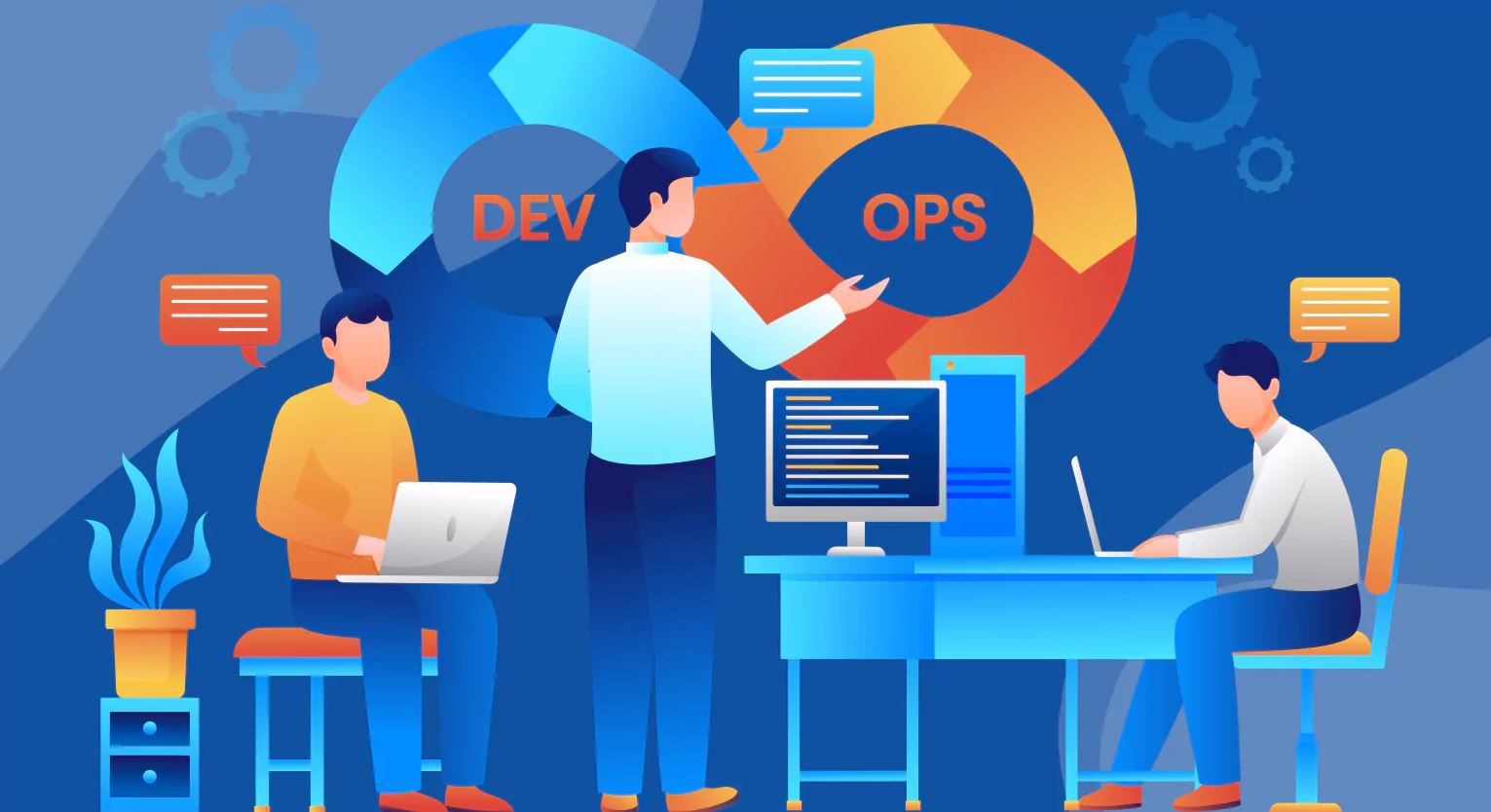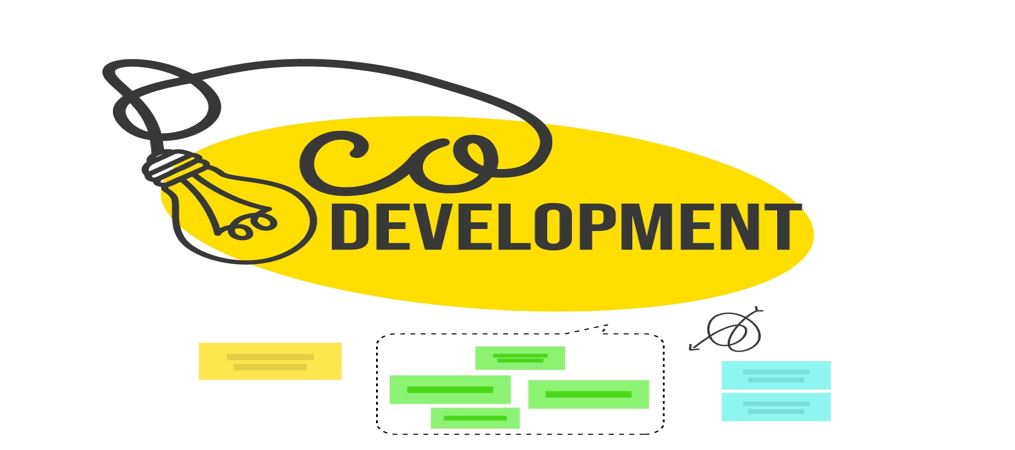Maximizing Efficiency with Co-Development Software A Comprehensive Guide
Co-development software stands as a pivotal tool in the realm of modern software development, radically transforming traditional methodologies by facilitating collaboration across diverse geographical and organizational landscapes. This form of software supports a variety of development strategies including outsourcing, offshoring, onshoring, and in-house development, proving indispensable in our increasingly interconnected world.
The essence of co-development software lies in its ability to enable multiple teams, whether situated in the same office or scattered across different continents, to work simultaneously on the same projects. This collaborative approach not only enhances efficiency but also enriches the development process through a blend of diverse insights and expertise. Such software platforms integrate functionalities that allow real-time communication, project tracking, and code sharing, thus overcoming the logistical challenges of distance and time zone differences.
In the context of outsourcing, co-development software allows companies to delegate specific tasks or entire projects to external entities without the traditional barriers of communication and workflow management. Similarly, offshoring benefits from such tools by enabling companies to tap into global talent pools, managing overseas teams effectively as if they were in-house. Onshoring, on the other hand, utilizes these tools to maintain software development within national borders, combining the benefits of local compliance and cultural alignment with the advantages of decentralized working environments.
The role of co-development software in in-house development cannot be understated either. It promotes a unified platform where all project stakeholders can interact seamlessly, share critical updates, and track project progress in real-time. This not only ensures that all team members are on the same page but also significantly reduces the development cycle time through streamlined processes.
Through these capabilities, co-development software has emerged as a cornerstone in the architecture of modern software development, essential for businesses aiming to maintain competitive advantages through innovative and efficient development practices.
Understanding Co-Development Software
Co-development software is a suite of tools that facilitate collaborative software development by enabling multiple developers and teams to work together on software projects from various locations around the globe. This approach integrates technologies and platforms that support real-time communication, shared resources, and simultaneous updates to project files, making it possible for geographically dispersed teams to effectively collaborate as if they were in the same room.
The core concept behind co-development software is to break down the barriers that traditionally segmented teams into silos. It leverages the power of the internet and cloud computing to provide a unified development environment that can be accessed anywhere, anytime. This is a significant shift from traditional software development practices, which often required all team members to be physically present in one location or to work in isolation and combine their efforts through less dynamic means, such as email or file sharing services.
This transition from traditional methods to collaborative environments has been driven by the need for faster development cycles, the ability to tap into a global talent pool, and the increasing complexity of software projects which require diverse skill sets to solve multifaceted problems. Co-development tools have paved the way for a more interactive, agile, and responsive software development process, aligning with the principles of agile methodologies and continuous integration and delivery (CI/CD) frameworks.
Benefits of Co-Development Software
Enhanced Collaboration and Communication
One of the primary benefits of co-development software is the enhancement of collaboration and communication across the development team. Tools like Slack, Microsoft Teams, and various project management platforms allow for instant messaging, video calls, and real-time feedback, ensuring that all team members can easily discuss issues, brainstorm solutions, and make decisions quickly. This constant communication helps to ensure that everyone understands their roles and responsibilities and that information is consistently shared across all levels of the project.
Increased Efficiency through Real-Time Updates and Shared Knowledge
Co-development software dramatically increases efficiency by enabling real-time updates and facilitating a shared knowledge base among all team members. Platforms like GitHub and Bitbucket support version control and offer features like merge requests and branching, which allow developers to work on different parts of a project simultaneously without the risk of code conflicts. This not only speeds up the development process but also ensures that knowledge and best practices are shared and accessible to all members, enhancing overall project quality.
Cost Savings from Decentralized Development and Code Sharing
The ability to work remotely and share code efficiently reduces the need for physical office space, travel, and relocation expenses, which can be substantial. Additionally, co-development software facilitates code reuse, which can significantly lower the costs associated with developing new software components from scratch. Companies can leverage existing codebases and customize solutions to fit their needs, thereby reducing the time and resources needed for development.
Faster Time-to-Market Due to Agile Methodologies
Utilizing co-development software aligns perfectly with agile methodologies, which emphasize flexibility, continuous improvement, and the delivery of high-quality software in short cycles known as sprints. This approach allows organizations to adapt to changes quickly, address feedback effectively, and accelerate the time-to-market for their products. Agile co-development environments enable teams to iterate rapidly on product design and functionality, often releasing updates and new features in a fraction of the time that traditional methodologies would require.
Overall, the integration of co-development software into the software development lifecycle offers transformative benefits, enhancing the way organizations build software. By fostering a collaborative, efficient, and agile environment, co-development software not only improves the productivity of development teams but also contributes to higher-quality software that meets the dynamic needs of businesses and consumers alike.
How Co-Development Software Works
Co-development software is designed to optimize the software development process by supporting a systematic approach that encompasses planning, goal setting, effective communication, and continuous progress tracking. This framework ensures that all team members are aligned with the project’s objectives and are able to collaborate effectively, regardless of their physical location.
Systematic Approach: Planning, Goal Setting, and Effective Communication
The foundation of successful co-development lies in meticulous planning and clear goal setting. Tools like JIRA, Trello, and BaseCamp are integral to this phase, allowing teams to outline the project’s scope, set deadlines, and allocate resources efficiently. These platforms enable project managers and team members to create detailed roadmaps, break down large tasks into manageable sub-tasks, and set measurable objectives that guide the development process.
Effective communication is another pillar of co-development software, ensuring that every team member can contribute to discussions, provide updates, and raise concerns. This is facilitated by integrated communication features within project management tools or through dedicated communication platforms like Slack or Microsoft Teams, which provide various channels for real-time discussions, updates, and feedback.
Continuous Progress Tracking and Real-Time Updates
Continuous progress tracking is vital to maintaining the momentum of software development projects. Co-development tools provide dashboards and reporting features that allow team leaders and members to monitor the progress of tasks in real-time. This visibility helps in quickly identifying bottlenecks, making necessary adjustments, and ensuring that the project stays on track. Real-time updates are crucial for agile development practices, where changes and improvements are continuously integrated into the project without disrupting the workflow.
Examples of Popular Co-Development Platforms
JIRA: Widely used for bug tracking, issue tracking, and project management. JIRA’s powerful workflow functionalities and customization options make it suitable for complex software development projects.
Trello: Known for its simple, card-based layout that allows teams to organize tasks across different boards. It is particularly popular for smaller projects and non-technical tasks.
BaseCamp: Focuses on providing a straightforward user interface and is used for project management and team collaboration, combining features like task lists, file sharing, and forums for discussions.
Types of Co-Development Software
Co-development software can be categorized into several types, each serving specific functions within the development process:
Project Management Tools
JIRA: Offers detailed issue and project tracking capabilities, making it ideal for managing complex software development projects.
Asana: Provides a flexible, user-friendly platform for task management and collaboration, helping teams track their work with custom workflows and visual project plans.
Communication and Collaboration Platforms
Slack: Facilitates instant messaging, integrates with numerous other tools, and organizes conversations into channels, making it a hub for day-to-day communication.
Microsoft Teams: Combines workplace chat, meetings, notes, and attachments, integrated with Office 365 applications, enhancing productivity.
Version Control Systems
Git: A distributed version control system that supports non-linear, distributed development, allowing for efficient handling of large projects.
SVN (Subversion): A centralized version control system that manages changes to files and folders in a repository, useful in environments where multiple developers are working on the same set of files.
Virtual Meeting Software
Zoom: Offers high-quality video conferencing features, making it suitable for team meetings, client presentations, and collaborative sessions.
Google Meet: Integrated with Google Workspace, it provides a secure platform for team discussions and video meetings, easily accessible via email or calendar invites.
The integration of these various types of co-development software into a cohesive system enhances the efficiency and effectiveness of software development teams, enabling them to tackle complex projects with greater agility and collaboration.
Best Practices for Utilizing Co-Development Software
Effective use of co-development software can significantly enhance team productivity and project outcomes. Here are some best practices to maximize the benefits of these tools:
Establishing Clear Goals and Objectives
Before beginning any project, it’s crucial to establish clear, measurable goals and objectives. This ensures that all team members understand the project’s purpose and what they are working towards. Co-development tools like JIRA or Asana allow teams to set specific, achievable goals and track their progress, ensuring alignment and focus throughout the project lifecycle.
Setting Realistic Timelines for Project Milestones
Realistic timelines are fundamental to project management success. They help manage team expectations and facilitate the efficient allocation of resources. Using project management software to set and adjust timelines helps maintain a realistic schedule, accommodating changes and delays without significantly impacting the project outcome.
Encouraging Regular Communication and Collaboration
Regular communication is vital in co-development environments to ensure everyone remains on the same page. Tools like Slack and Microsoft Teams support this by providing platforms for instant messaging and video conferencing, making it easy for teams to maintain open lines of communication. Regular meetings and updates, facilitated by these tools, help preempt potential issues by addressing them proactively.
Emphasizing the Importance of Active Code Reviews and Pair Programming
Active code reviews and pair programming are practices that not only improve code quality but also foster knowledge sharing and mentorship among team members. Version control systems like Git facilitate code reviews by allowing multiple developers to submit their code for review before it is merged into the main project, ensuring any potential issues are identified and addressed early.
Challenges and Solutions in Co-Development
Common Challenges
Collaborative software development often encounters specific challenges, including coordination complexity, maintaining security, and managing remote and distributed teams.
Coordination Complexity
As projects grow in scope and team size, coordinating tasks becomes increasingly complex. Tools like JIRA and Trello can help manage this complexity by allowing project managers to break down projects into smaller, manageable tasks and subtasks, assign them to specific team members, and track their progress in real-time.
Ensuring Security
Security is a critical concern in co-development, especially with teams spread across different geographical locations. To address security challenges, it’s important to use tools that provide robust security features like end-to-end encryption, secure access controls, and regular security updates. Additionally, implementing best practices such as regular security audits, using VPNs, and training staff on security protocols is essential.
Managing Remote and Distributed Teams
Remote and distributed teams face challenges such as differing time zones, cultural differences, and lack of face-to-face interaction. Effective management of these teams can be achieved through the use of virtual meeting software like Zoom and Google Meet, which help simulate a more interactive and engaging meeting environment. Additionally, establishing a strong culture of trust and responsibility is crucial, which can be fostered by regular check-ins and transparent communication practices.
Tips for Effective Management
- Use Synchronous and Asynchronous Communication Tools: Balance live meetings with tools that allow for asynchronous communication, so team members can collaborate effectively across different time zones without feeling the need to be online at all hours.
- Regularly Update and Train Team Members: Keep all team members updated with the latest tools and practices in remote collaboration, and provide training to enhance their skills.
- Set Clear Expectations and Feedback Channels: Clearly define roles and expectations, and provide channels for regular feedback, allowing for continuous improvement and engagement.
Implementing these strategies can help overcome the challenges of co-development, making it possible for teams to collaborate more effectively and produce higher-quality software products.
Case Studies and Examples
Real-world Examples of Successful Co-Development Projects
1. Global Software Development for a Tech Giant A leading technology company utilized co-development software to orchestrate a large-scale project involving developers from the United States, India, and Ireland. By leveraging tools such as Git for version control and JIRA for project management, the company managed to reduce its product development cycle by 30%. This was achieved through real-time collaboration, continuous integration, and delivery, which allowed for immediate feedback and rapid iteration of the software product.
2. Agile Transition in the Automotive Industry An automotive industry player adopted co-development practices to transition from a traditional waterfall development model to an agile framework. Using Trello and Slack, the company enhanced communication between designers, engineers, and production teams across different continents, leading to a 40% improvement in time-to-market for new vehicle models. The agile approach facilitated by co-development tools enabled the teams to adapt quickly to changing market demands and regulatory requirements.
Insight into How Various Industries Leverage Co-Development Software to Enhance Productivity
Healthcare Sector Hospitals and healthcare providers have utilized co-development software to develop custom healthcare applications that improve patient care and data management. For instance, collaborative tools enabled a seamless exchange of information between software developers and healthcare professionals, resulting in highly tailored healthcare management systems that offer robust data analysis and real-time patient monitoring.
Education Technology Educational institutions and EdTech companies are increasingly adopting co-development tools to create learning management systems (LMS) and other educational applications. Co-development practices facilitate the involvement of teachers, students, and technical developers in the software development process, ensuring that the end product is highly effective and user-friendly.
Frequently Asked Questions
What is Co-Development Software?
Co-development software refers to a set of tools and practices that facilitate collaborative software development. These tools allow multiple users to work on the same project simultaneously, regardless of their geographical locations, by providing a shared platform for code development, project management, and communication.
How Does It Differ from Traditional Software Development?
Traditional software development often involves a sequential approach where developers work in isolation or pass tasks along a chain. Co-development, in contrast, enables simultaneous contributions from all team members, supported by tools that ensure instant communication and real-time updates. This approach is more dynamic and adaptable to changes, embodying principles of agile and continuous development.
What Are the Main Benefits?
The main benefits of co-development software include increased efficiency, enhanced collaboration, reduced development time, and cost savings. By enabling real-time updates and communication, these tools help keep all team members aligned with the project’s goals and progress, thereby minimizing delays and misunderstandings.
Can It Be Used for Any Type of Project?
Yes, co-development software can be used for a wide range of projects, from small-scale applications to large enterprise-level systems. Its flexibility and scalability make it suitable for various industries and project sizes.
Is It Suitable for Remote Teams?
Co-development software is particularly beneficial for remote teams as it bridges the gap caused by physical distance. It provides various tools that support both synchronous and asynchronous communication, essential for maintaining the flow of information and collaboration among team members who are not co-located.
Are There Any Security Concerns?
While co-development software generally includes robust security features, such as data encryption and secure access controls, security concerns can arise, especially when sensitive information is involved. It is crucial to choose reputable software providers and implement additional security measures like two-factor authentication, regular security audits, and compliance checks to safeguard project data.
Co-development software has undeniably transformed the landscape of the software development industry. By enabling seamless collaboration across geographical boundaries, this technology has reshaped how projects are approached, managed, and executed. The ability to work simultaneously on the same project files and maintain continuous communication has not only increased productivity but also enhanced the quality of software development processes.
As we look to the future, the role of co-development software is set to become even more integral. The ongoing trend towards globalization and remote work arrangements demands tools that can support diverse and dispersed teams. The evolution of collaborative software tools will likely focus on enhancing real-time interactions and integrating more intuitive user interfaces and AI-driven functionalities to predict project bottlenecks and suggest optimizations.
Moreover, as cybersecurity becomes a pressing concern, the next generation of co-development platforms will integrate stronger security protocols directly into their frameworks, ensuring that collaboration does not compromise data integrity. Additionally, we can anticipate a greater emphasis on modular design within co-development tools, allowing teams to customize their development environments according to specific project needs and team preferences.
In essence, co-development software is not just a facilitator of more efficient software development but a catalyst for innovation. By breaking down traditional barriers to communication and collaboration, these tools empower developers to leverage collective knowledge and creativity. The future of co-development software is bright, promising to deliver even more powerful capabilities that will continue to revolutionize the software development industry. This evolution will undoubtedly foster an era of unparalleled productivity and innovation, anchored by the capabilities of collaborative technologies.
News -The Fallout of Anjali Arora’s MMS Viral Video A Comprehensive Analysis
Unveiling the Impact of Desi Viral MMS Videos on Indian Society
Exploring the Impact of Brazzers’ Viral Videos on Modern Advertising
The Aftermath of the Aman Ramgarhia Viral Video A Discussion on Privacy and Digital Responsibility
Controversy Unfolds Edward Teach Brewery Viral Video Sparks Widespread Reactions
Videos Filtrados de Yailin La Más Viral and Tekashi Spark Outrage and Debate
Unpacking the Impact The Cristoferideas Video Viral Phenomenon




